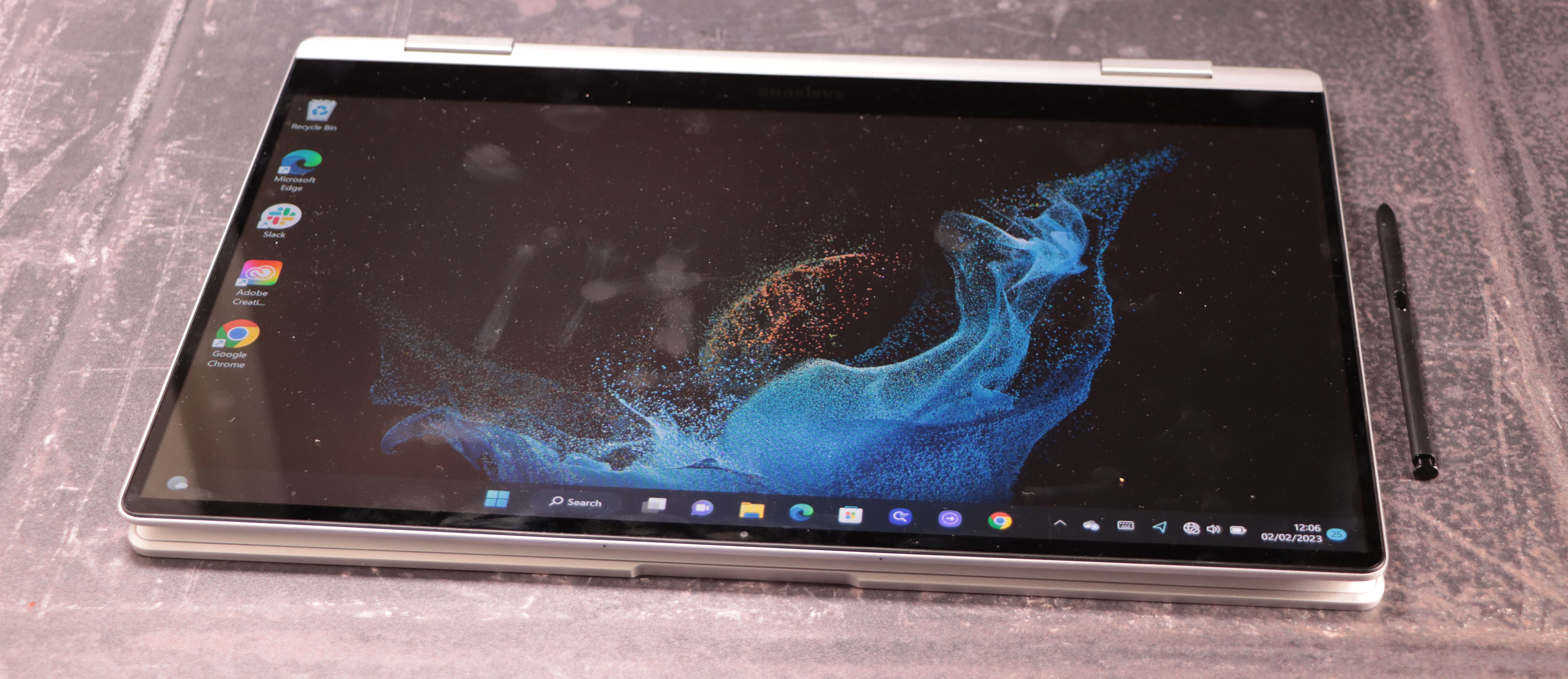Our Verdict
The Samsung Galaxy Book2 360 is a 2-in-1 device with a gorgeous screen, which is more than capable when you're using it for everyday tasks. However, when faced with processing heavy apps, battery life suffers. As a tablet, the idea behind this piece of kit is good, but it feels like Samsung needs to make a few tweaks to make this a more rewarding user experience. Overall, if you want a Windows laptop and a decent tablet in one light and portable device, and don't expect to be using too many power-hungry apps at once, this is a decent option.
For
- Copes well with everyday tasks
- 2-in-1 capabilities
- Very portable
- Decent amount of ports
Against
- Webcam is unflattering
- Battery life variable
Why you can trust Creative Bloq
Processor: 12th Gen i5-1235U or i7-1260P
Display: 13.3-inch AMOLED touchscreen (1,920 x 1,080)
Graphics: Integrated Iris Xe
Memory: 8GB RAM or 16GB
Storage: 256GB or 512GB
Ports: USB-A, microSD, Thunderbolt 4, USB-C, HDMI, audio in/out
Weight: 1.16kg
Dimensions: 304.4 x 202 x 12.9mm
Camera: 720 HD
Speakers: Stereo speakers
The Samsung Galaxy Book2 360 was released early last year and is a 13.3-inch 2-in-1 device. It sits between the Galaxy Book2 and the Galaxy Book2 Pro 360 in Samsung's lineup. This range has just been superseded by the Galaxy Book3, which, at the time of writing, is only available on preorder.
I tested the lowest-specced version of this 2-in-1, so the 12th Gen i5-1235U version with 8GB RAM. I used it as my main machine for several days, using it for web browsing, CMS uploading, watching films and videos, playing music, making video calls and also testing out apps such as Adobe's Photoshop. I also ran some benchmark and battery life tests on it, and played around with using it as a tablet, with the S Pen (sold separately), to see how it stacks up against the best 2-in-1 laptops out there right now.
Samsung Galaxy Book 2 360 review: Design and build
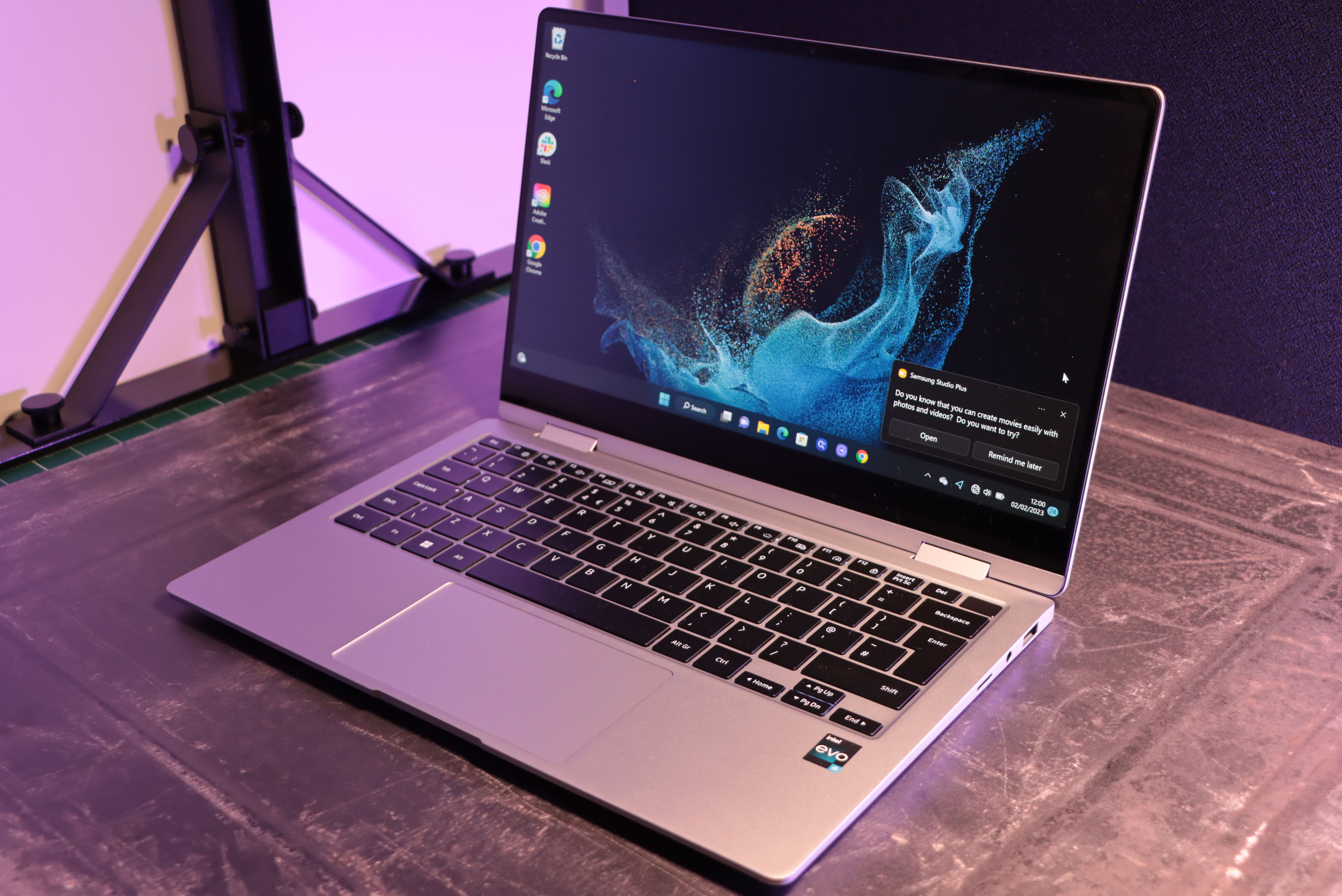
At just over a kilo, the Galaxy Book 2 360 is pretty lightweight, and with its silver, slim look and design, it's hard not to compare it to the MacBook Air. The MacBook Air may win out in some areas (more on that later), but this Galaxy Book has a couple of features the MacBook Air lacks.
First of all, you can push the screen right back, flip it over and you've got yourself a tablet. You'll need to buy an S Pen to get the most out of this, but this setup is, in theory, ideal for when you want to draw something on a tablet, then flip back to computer mode to make quick edits or share your work with someone. You can use the tablet with a stand if you flip it halfway, or flip back completely and use it flat.
In practice, however, I found switching between modes a little awkward. The problem is that when you turn the computer into a tablet, the keyboard is then underneath the tablet, meaning that you end up touching the keys on the computer keyboard. This doesn't activate anything on the tablet screen, but still, it feels a little odd to be resting your hands on keyboard keys. And it feels like over time, those keys could get quite sticky and potentially break.
The bezels on the screen are nice and thin, except from around the bottom of the screen (or the top of the tablet if you're in landscape view), where they are wider. It's not totally obvious why this might be the case.
Samsung Galaxy Book 2 360 review: Features
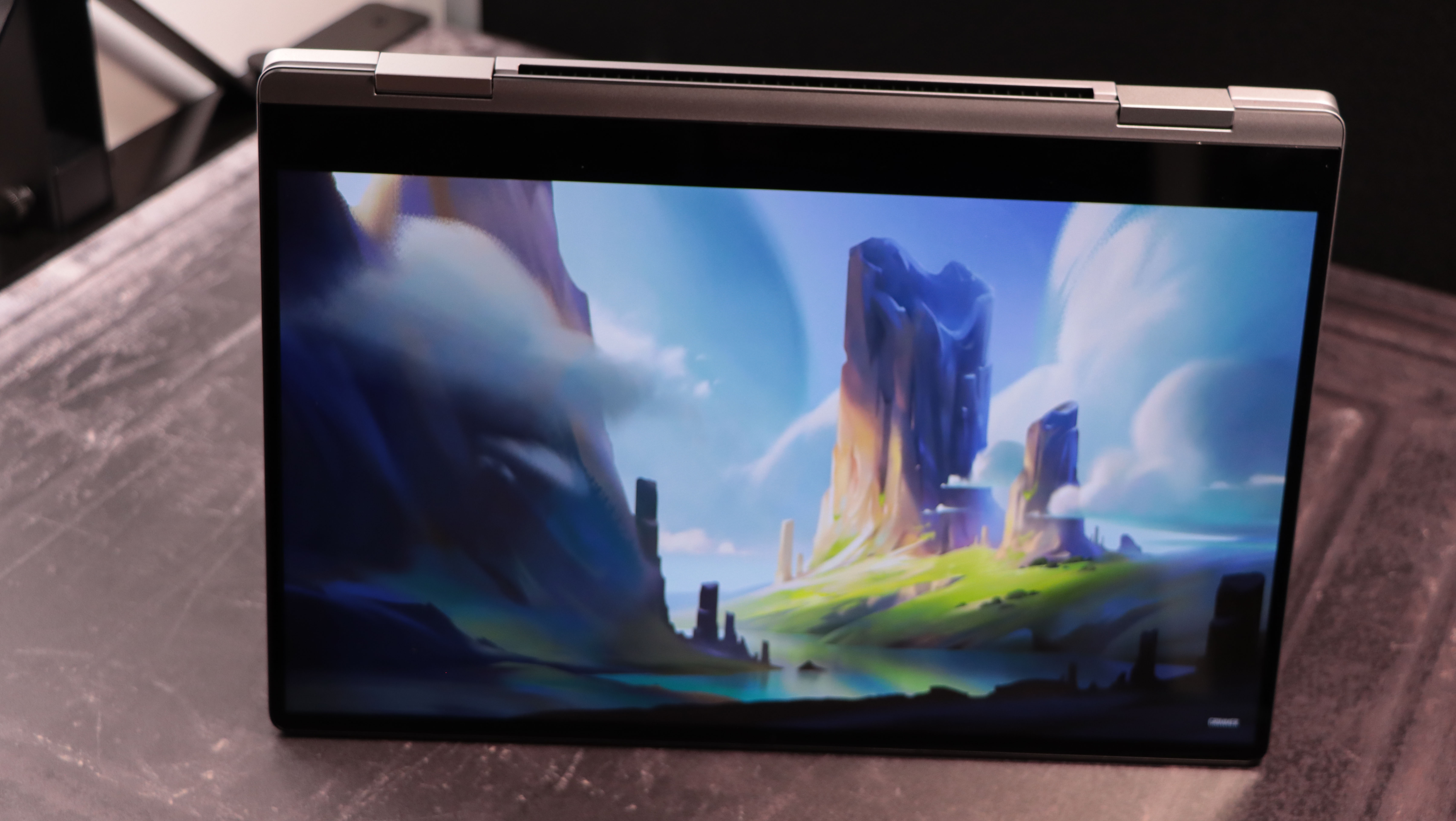
The Galaxy Book2 360 has an impressive 13.3-inch AMOLED touchscreen (1920 x 1080). The colours were crisp and bright and the touchscreen element gives the laptop another dimension. I've never had a touchscreen computer before and so I found I didn't really use this function much at first, simply because I'm not used to it, but once I started flipping between tablet and laptop mode, I saw the benefit. Once I'd finished using the device as a tablet, it felt more natural to touch the screen in laptop mode as well.
You log on to the laptop using Samsung's fingerprint sensor or with a pin. In my experience, the fingerprint sensor worked 95 per cent of the time. The issue is that when you're logging in while using the machine as a tablet, if you want to use your fingerprint, the button is now at the back of the tablet. This seems like an odd design failing that Samsung should address.
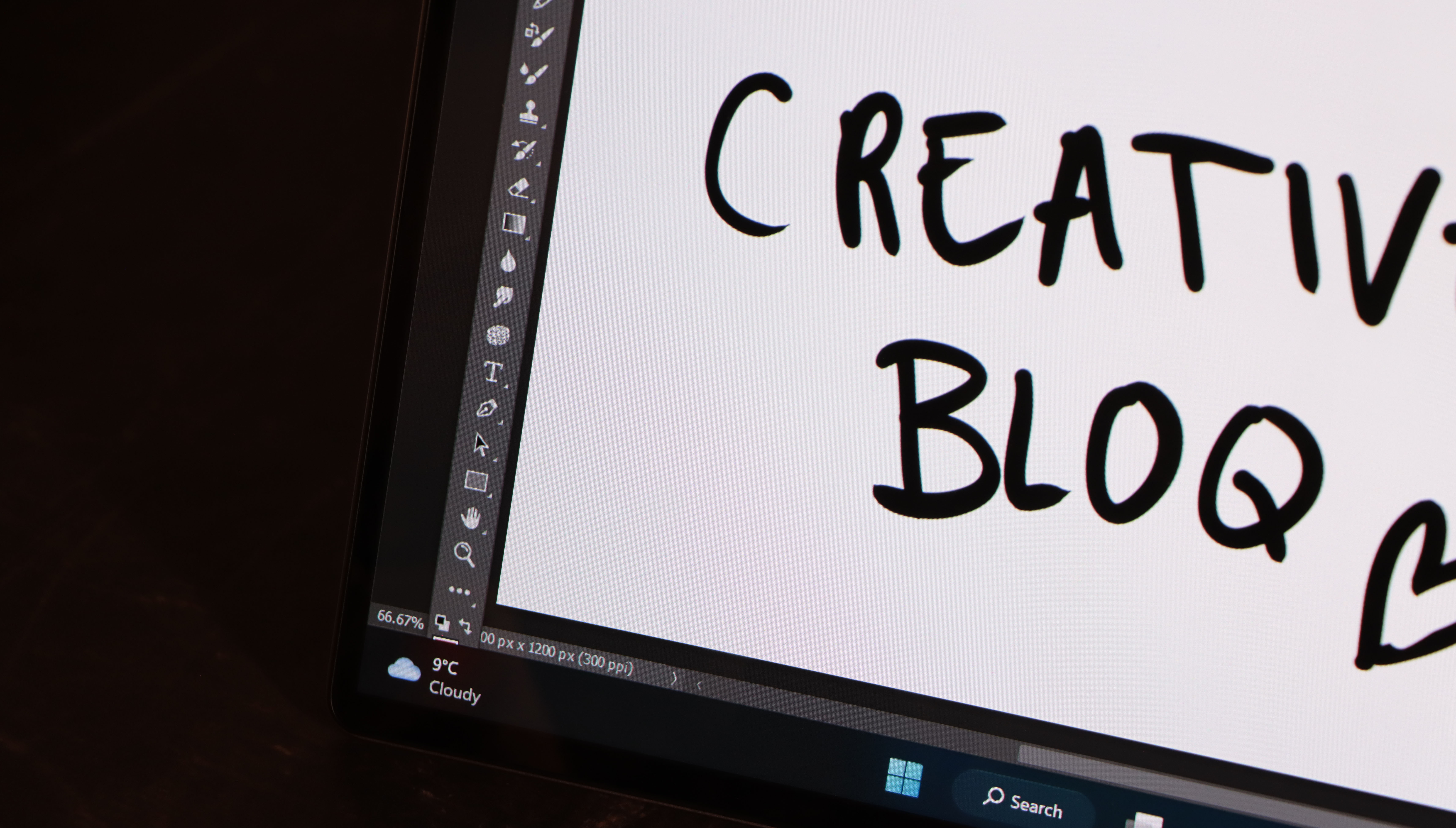
It's also worth noting that not all apps are optimised for the tablet on this device. When trying to use Photoshop, I found that the menu down the side was longer than the screen, and so was annoyingly cut off at the bottom, meaning it was a struggle to pick a colour.
The audio is decent, with a dual-array mic. Note that the mics are underneath the machine, so if you have a laptop stand like I do, you may find it isn't as clear.
One thing that really disappointed me about this machine was the webcam. It's a 720p HD, which doesn't suggest it's going to be brilliant, and it really isn't. I found that I had an almost eerie, unflattering glow around me while on a video call, so much so that my teammates were able to notice the difference with that and my normal webcam (the MacBook Air (M1, 2020), which also has a 720p HD webcam.
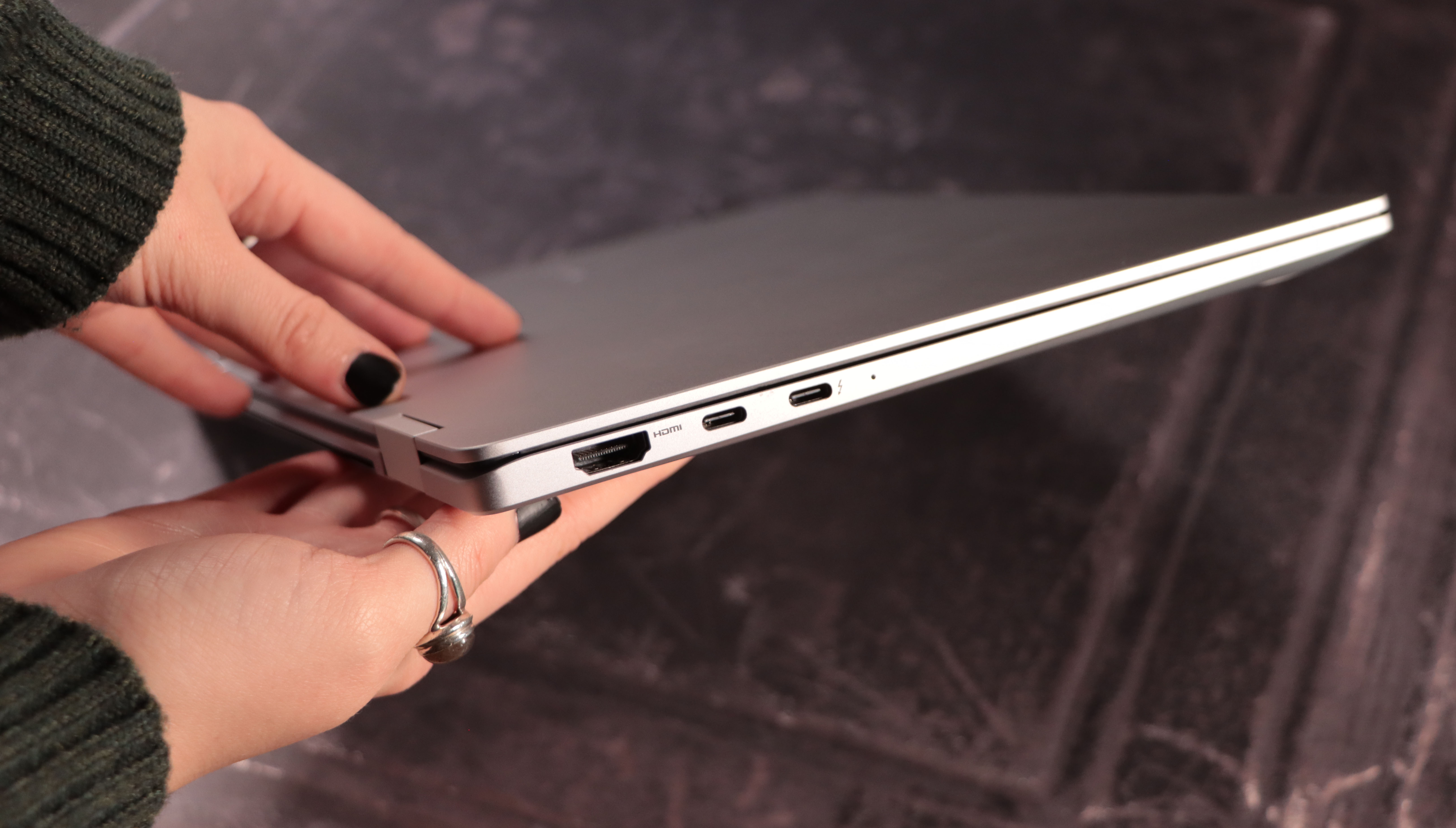
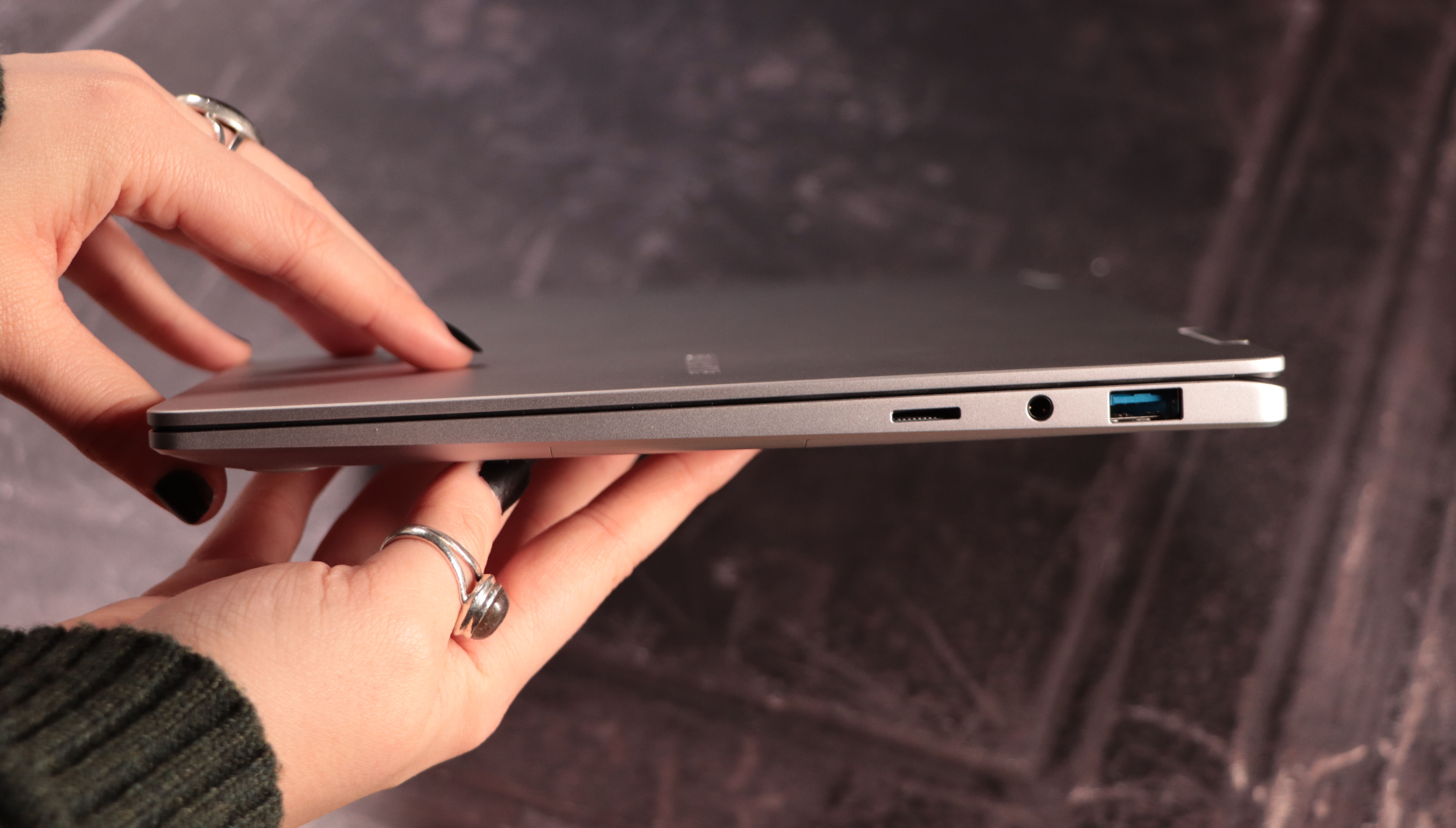
In terms of ports, there's plenty on offer. There's a Thunderbolt 4, a USB Type-C and Type-A, an audio in/out, HDMI and room for a microSD – definitely better than Apple's limited offerings!
I also liked the keyboard and the trackpad, and found them both easy to use.
If you're already part of the Samsung ecosystem, then that's where this machine really comes into its own. You can connect this 2-in-1 with a Galaxy Tab wirelessly to add a second screen, which although I didn't get to try it, I can see being a massive plus. You can also send files between Galaxy devices, and connect with your mobile to open files you've just opened on your phone.
Samsung Galaxy Book 2 360 review: Performance
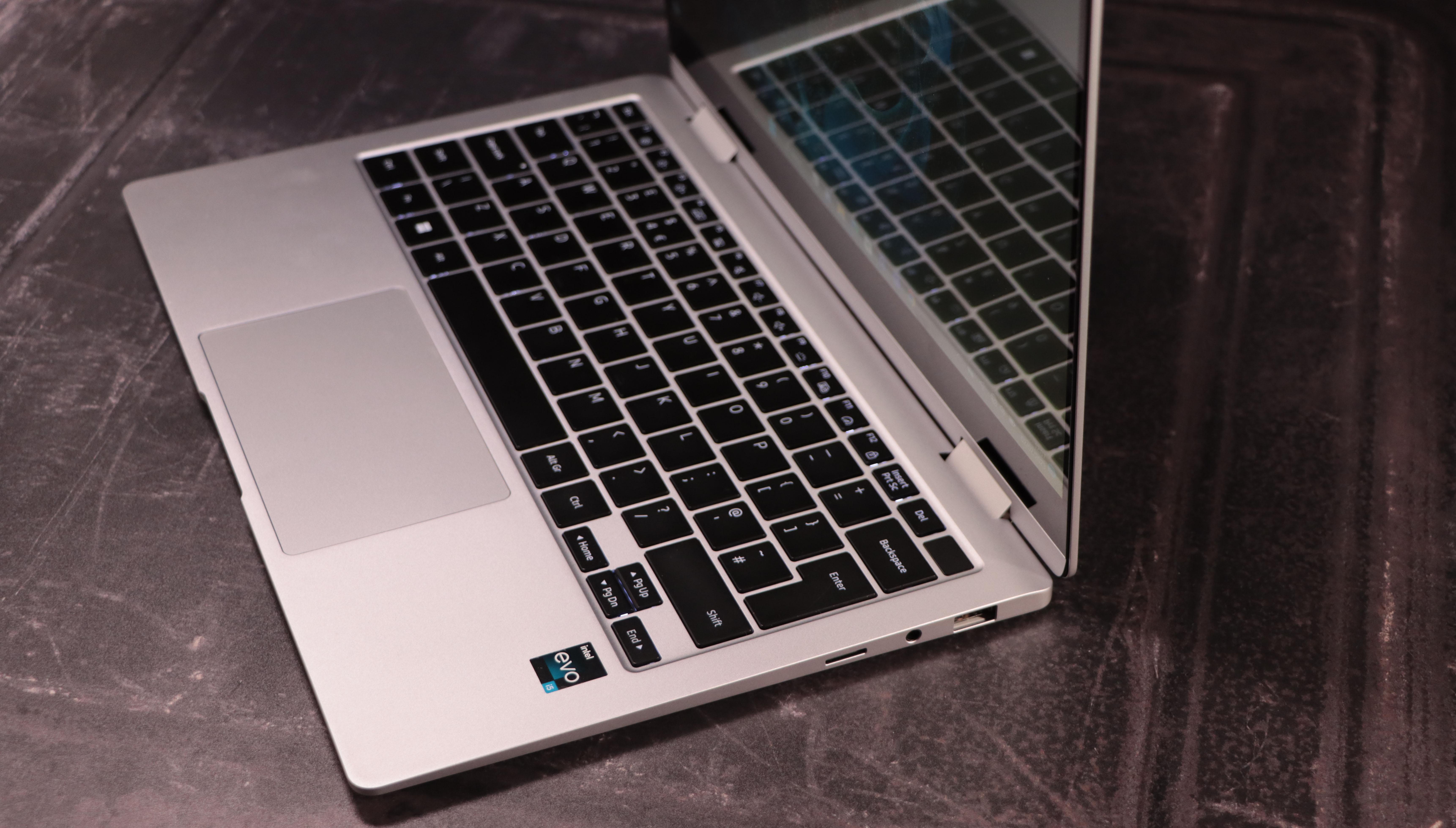
For everyday tasks, the Galaxy Book2 360 performs pretty well. It can handle you having several tabs open at once, plus some software, and it downloads things fairly quickly, though not lightning fast.
In terms of benchmarks, it comes out as similar to the MacBook Air (M2, 2022) on our single-core tests, but scores around 2,000 below it on the multi-core tests, suggesting that it can't handle doing so many things at once.
Here's how the Samsung Galaxy Book 2 360 performed in our suite of benchmark tests:
Cinebench R23 CPU: Single-Core: 1,566; Multi-Core: 6,287
Geekbench 5: Single-Core: 1,443; Multi-Core: 6,866
I also compared it to the MacBook Pro M1, 2020, which is the machine I use as my main work laptop. The 2020 MacBook Air scores roughly 1,000 more on multi-core benchmarks than the Samsung Galaxy Book2 360. This fits in with my experience of using both machines, I find my MacBook Pro (M1) to be more capable of handling lots of different tasks at once.
The Samsung Galaxy Book2 360 has comparable benchmarks and a similar price point to the HP Elitebook 840 G9 that we reviewed recently, though the HP is a laptop rather than a 2-in-1.
Whether or not you find this 2-in-1's performance good enough for your needs will largely depend on what you're going to use it for. If you're using it for web browsing, some lighting photo editing and a bit of streaming, it's great. If you want it to be able to handle heavy video files and lots of different things at once, you will probably find it lacking, especially with the specs I tried.
Samsung Galaxy Book 2 360 review: battery life
My experience with the Samsung Galaxy Book2 360's battery life was variable. In our streaming video test, where I played a looped video continuously, it ran for eight and a half hours, so far so good.
However, when I used it as our main laptop, it didn't do so well. On one particularly disappointing morning, I used it for internet browsing, for a half-hour video call, to download Photoshop, and use Photoshop for some basic photo-editing tasks (just tweaking a couple of small images, so nothing too taxing). It lasted just three hours and 15 minutes. On other days I was able to squeeze five or so hours out of it, particularly when I wasn't doing anything too processing-heavy on it.
One plus is that the Galaxy Book2 360 is quick to charge up. Once I'd run the battery to empty, just one hour later it was at 79% charge. I also like the charger, which is small and folds up neatly.
Samsung Galaxy Book 2 360 review: price
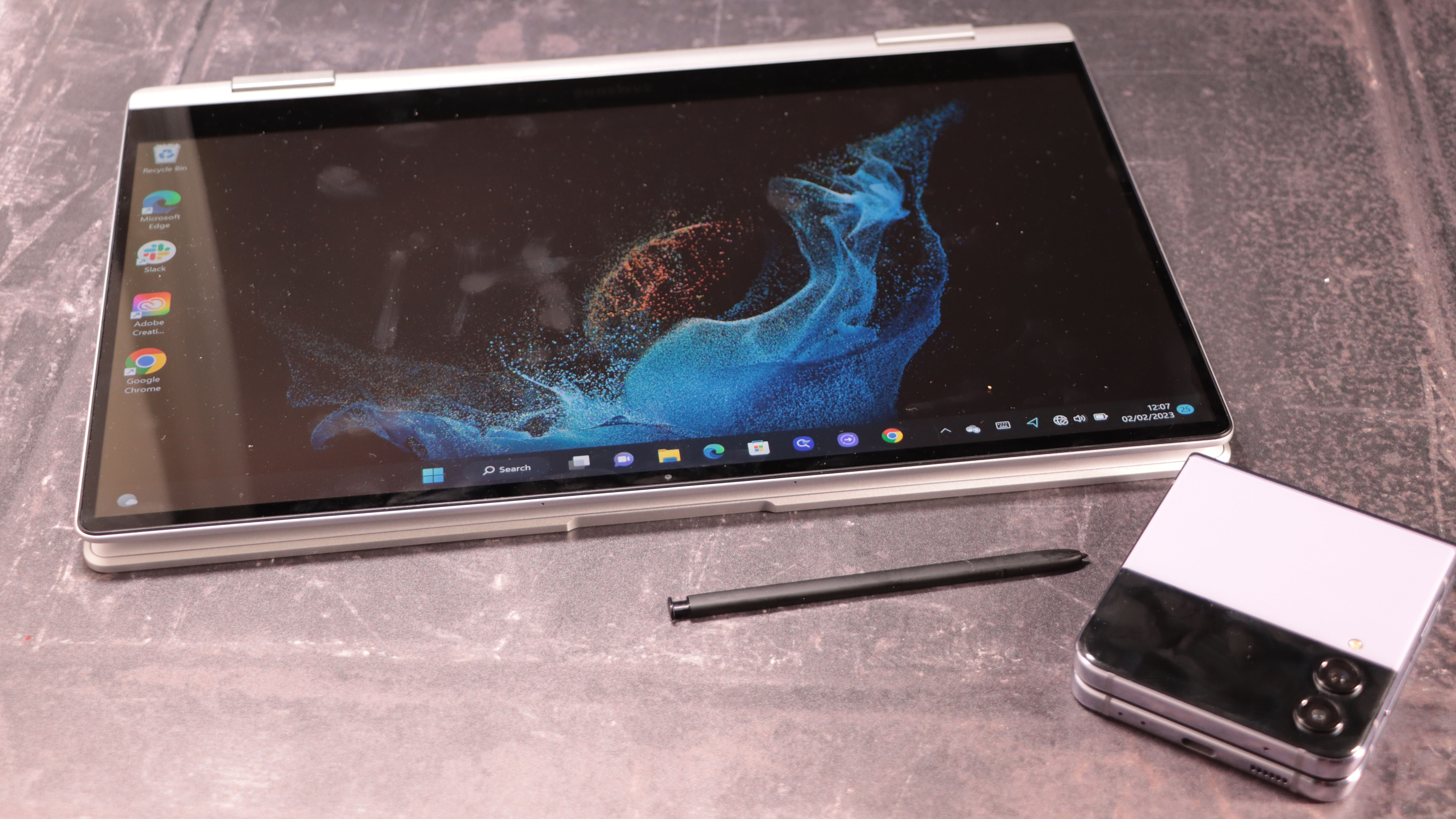
The model I tested with the i5 core, 8GB RAM and 256GB SSD is priced from $949.99 / £999, while if you want the i7 core model with 16GB RAM and 512GB SSD it costs $1,149.99 / £1,199. Note that if you want the S Pen, you'll have to pay for that separately, which will cost you around $50 / £50, or around $100 / £100 if you want the S Pen Pro.
However, there are already some pretty decent discounts available on this device, and we expect the cost to drop further with the release of the Samsung Galaxy Book3 360. This new model starts at $1,299.99 / £1,199.00, making it slightly more expensive than the 2 on release, but that one does come with the S Pen included.
The 'pro' version of this laptop, the Samsung Galaxy Book2 Pro 360, costs from $1499.99, but again, discounts are available.
For comparison with Apple laptops, the MacBook Air (M1) starts at $999 for the 8GB, 256GB SSD version, and the M2 version with the same specs starts at $1,119. Of course, the MacBook Air isn't a tablet and isn't compatible with the Apple Pencil. If you wanted an iPad as well, you'd be paying a lot more.
Should I buy the Samsung Galaxy Book2 360?
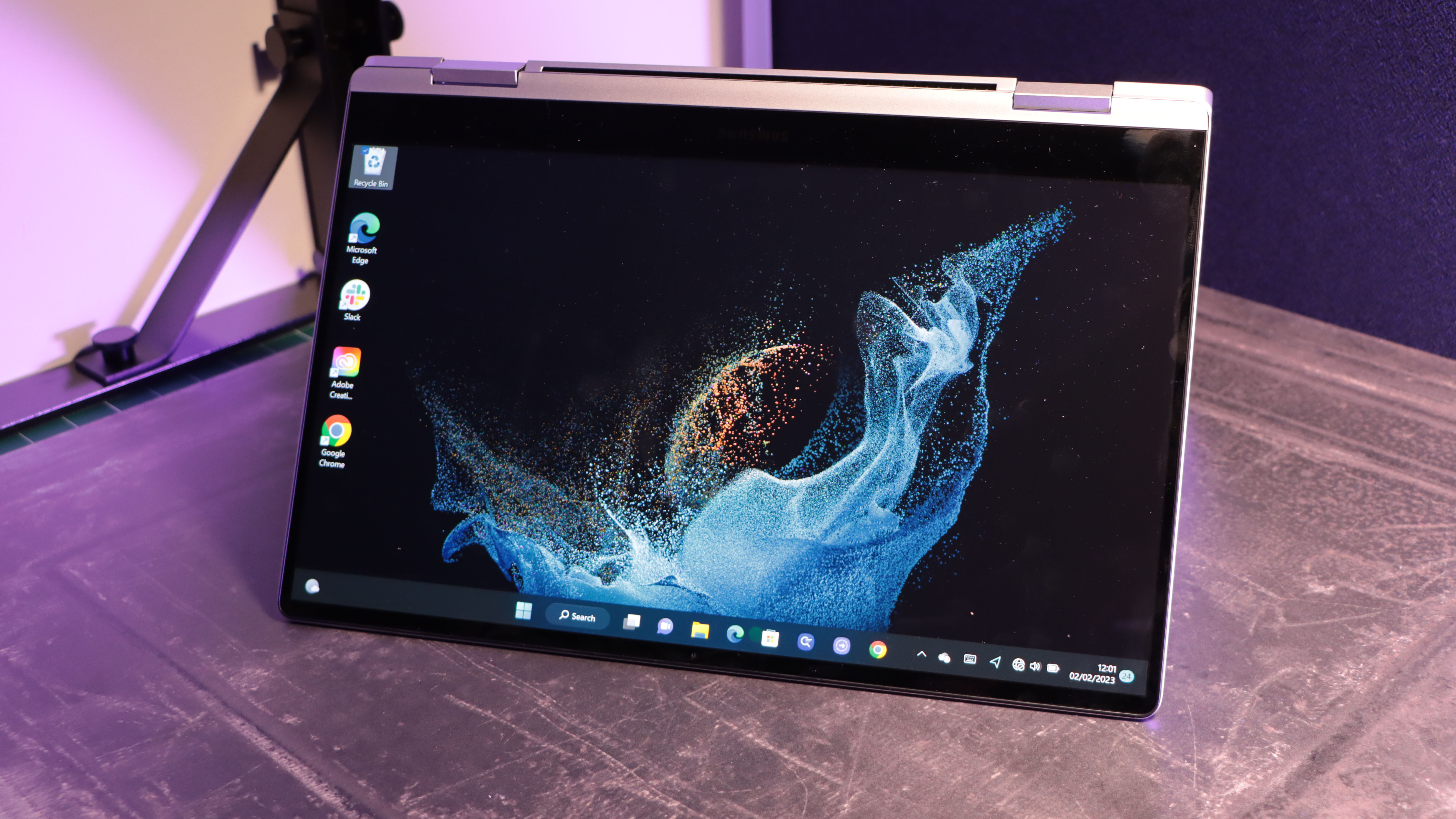
Whether or not this machine is for you will largely depend on what you want it for. I found that idea of having a 2-in-1 definitely appealed to me as I'm used to lugging around an iPad with a Magic Keyboard plus a laptop when travelling. But, the tablet is quite heavy and I didn't find it the most comfortable to use, nor were the apps I tried optimised for it.
So I'd recommend thinking about how much you're actually going to use the computer as a tablet and which apps you want to run before you buy. If you don't imagine you're going to get much use of it, then having it just for joy of flipping it back and forth may not be worth it, and you may want to opt for a cheaper machine, go for something like the MacBook Air instead, or try another machine in our best laptops for students guide.
Also, as the Galaxy Book3 360 has just been announced, that's another option. It's potentially a more appealing option as it comes with the S Pen included and has slightly improved specs (13th-gen core instead of 12th-gen). There's also the Pro version of this machine to consider. Samsung has a comparison tool on its website if you're not sure which is right for you.
Read more: Apple vs Samsung: which brand should you buy?

Thank you for reading 5 articles this month* Join now for unlimited access
Enjoy your first month for just £1 / $1 / €1
*Read 5 free articles per month without a subscription

Join now for unlimited access
Try first month for just £1 / $1 / €1
out of 10
The Samsung Galaxy Book2 360 is a 2-in-1 device with a gorgeous screen, which is more than capable when you're using it for everyday tasks. However, when faced with processing heavy apps, battery life suffers. As a tablet, the idea behind this piece of kit is good, but it feels like Samsung needs to make a few tweaks to make this a more rewarding user experience. Overall, if you want a Windows laptop and a decent tablet in one light and portable device, and don't expect to be using too many power-hungry apps at once, this is a decent option.

Rosie Hilder is Creative Bloq's Deputy Editor. After beginning her career in journalism in Argentina – where she worked as Deputy Editor of Time Out Buenos Aires – she moved back to the UK and joined Future Plc in 2016. Since then, she's worked as Operations Editor on magazines including Computer Arts, 3D World and Paint & Draw and Mac|Life. In 2018, she joined Creative Bloq, where she now assists with the daily management of the site, including growing the site's reach, getting involved in events, such as judging the Brand Impact Awards, and helping make sure our content serves the reader as best it can.
